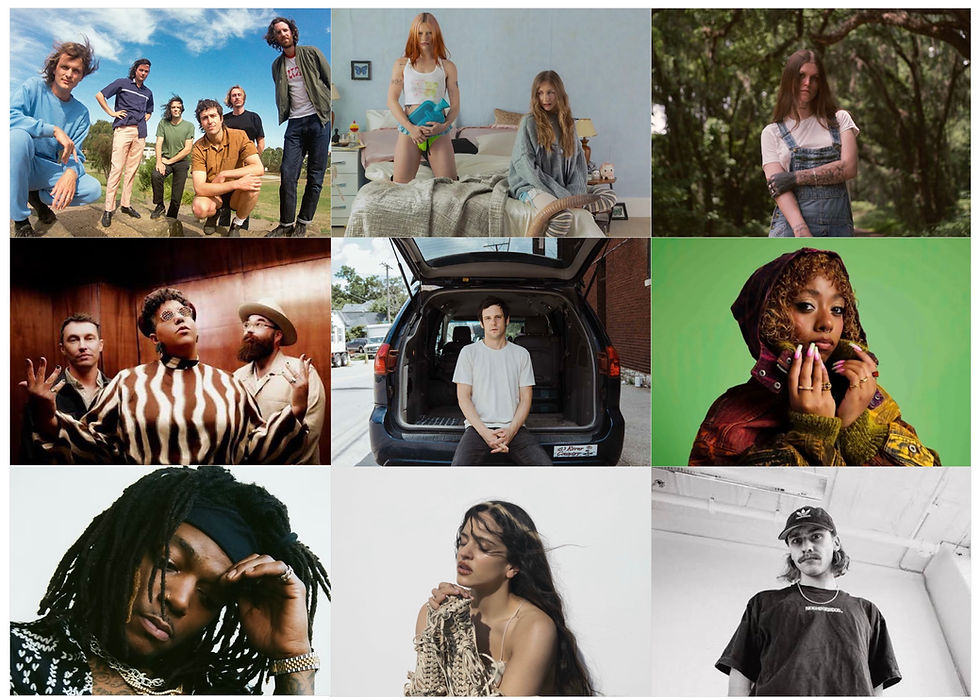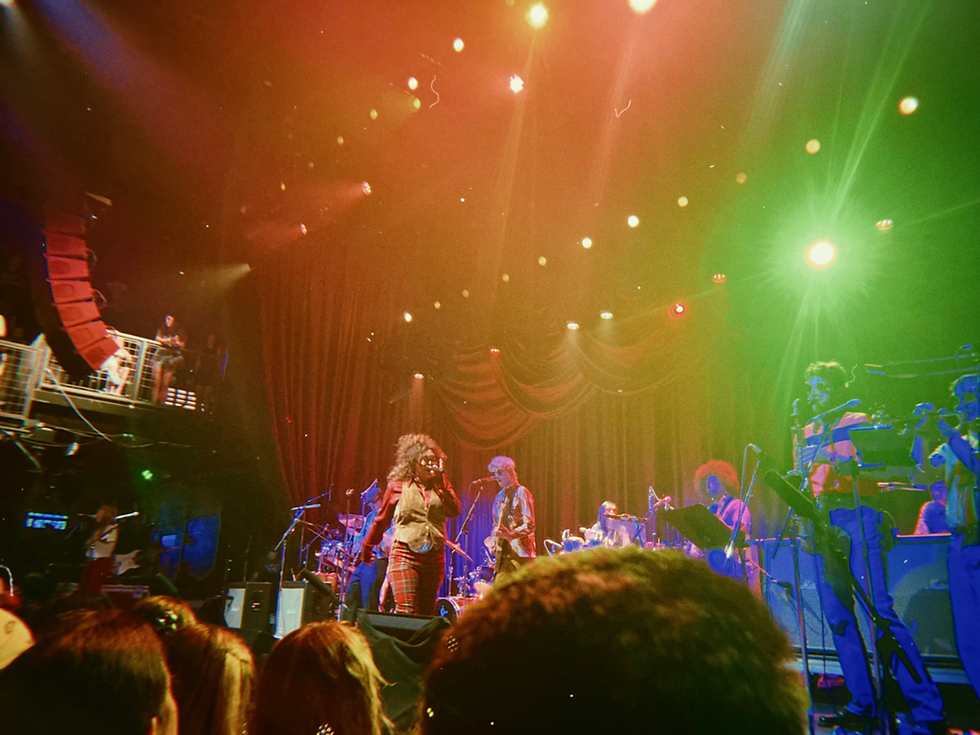How "High Fidelity" Talks About Music and Teaches Us How To Make A Playlist
- Andrew Doucette
- May 9, 2021
- 7 min read

Even though music is one of the biggest forms of entertainment, the amount of music-driven television shows and movies are slim. For movies, it tends to revolve around either documentary style movies like Straight Outta Compton and Bohemian Rhapsody, or comedies like School of Rock and Pitch Perfect. Looking at TV shows, most of them are competition talent shows, like American Idol and The Voice. Even though shows with rappers that have started to become popular, like Atlanta and Dave, they aren’t really about the music at all, but rather the industry and what it does to the people in these careers. High Fidelity might not be just about music, or even mostly about music, but it encapsulates one thing better than all these other shows, what it means to be a music nerd.
For those unfamiliar with the story, it follows Rob in their life of owning a record store and looking back into their old relationships. It was originally a book in 1995, made into a movie in 2000, a musical in the mid-2000s, and finally into a television show last year. This version of the story is plot wise similar to the book, but changes everything about the demographics of the story. Instead of the main character being a straight white man, Rob is now a bisexual mixed race woman played by Zoe Kravitz. The format of a television show also allows them to delve into both the main character and the side characters deeper, so it’s already at an advantage. Most of the runtime is focused on the relationship aspect of the show, as that’s what the book is about. Still, even with that extended runtime, they still managed to put in detail after detail of how a music lover acts.
The first example that hit me was when Rob is going on a first date with a new love interest and he mentions if she’ll leave if he admits he fully loves the song playing. The song in question is Fleetwood Mac’s “Dreams” and for the next 45 seconds, she goes off on everything from how she feels about the entire Rumours tracklist to the drama surrounding the band being more entertaining than the music before actually answering his question (which she agrees is excellent). That little rant is something I’ve done almost every time I get to talk about music with people. Even recently, I was talking with my friend after a run and after he brought up Megan the Stallion and female rap as a whole, and I probably rattled off 5-10 more and a fact about each before I caught myself that he didn’t really ask about it.
Another little thing they do is actually referencing other artists accurately. For example, Rob’s two coworkers were trying to get her to go to a show with them. As Simon, one of the coworkers, was describing the musician’s influences, he ended up mentioning Frank Ocean. To quote his description, “It’s sorta like this Unknown Mortal Orchestra meets Frank Ocean kinda vibe. Not Channel Orange Frank Ocean, but Blonde Frank Ocean.” The little detail of him having to mention what album Frank he’s talking about is so accurate because each project being an influence would mean different things sonically. It’s something that you wouldn’t expect a television show to get right, but it’s definitely something you would mention talking about Frank’s music with a friend. Even just before this scene when they decide to go ask Rob, Simon can tell she’s feeling sadder than normal because she’s listening to Minnie Riperton.
The extremely minute details like the one I just mentioned keep coming through in the entire series. Even something like trying to identify the covers in the background is entertaining (I counted three different Blood Orange albums throughout the series). Something else the show does nicely is that even though the three main characters are all music/entertainment nerds, they can’t be like that around everyone. When she’s with her friends, Rob’s able to make a detailed Braveheart reference and have them fully understand what she’s talking about. Later in the episode, she’s having brunch with her brother and his wife and even mentioning the name Braveheart left them with blank stares. It’s not a big deal that someone doesn’t know what one movie is, but you just learn when you can be the music nerd around and when to temper that urge.
Before I start to transition into the main reason for this piece, there was one more specific time in the show that my music nerd brain just lit up during. Rob is starting to date/hookup with this up and coming rockstar and while he’s in the studio, he calls her to come and chill. Since they’re in New York City, they don’t just go to any studio, but to Electric Lady Studios. The studio was made by Jimi Hendrix and was supposed to be his safe haven for recording, but he was only able to use it for a few weeks before he passed. Instead, what made me perk up was that this is the same room where Stevie Wonder recorded Talking Book and Music of my Mind. It’s the same place where the Soulquarian revolution set up shop. Classic albums from D’angelo, Erykah Badu, The Roots, Common, and more were all recorded right where they were sitting, simultaneously. Seeing that everything happened right in that room is like seeing where LeBron trains, or Tiger Woods practices. Instead of being this mythical thing, you’re seeing it all with your very own eyes. Even Rob is clearly trying to hold in her excitement while entering the building (it’s in her desert island top five list of recording studios), and even when she enters the studio, Jack Antonoff is behind the boards producing the track. This studio is one of the most iconic, and often forgot about studios in music.
But I didn’t write all of this to just gush about the music nerd portrayal in this show, or even to do a formal review. There are still plenty of other aspects of the television show too that I would talk about if this was an actual review of the show. Instead, I found one thing Rob said to really stand out among the rest. In the second episode, Rob is attempting to make a playlist as a sort of therapy and her description on it is perfect, “Making a playlist is a delicate art. It’s like writing a love letter, but better in a way. You get to say what you want to say without saying it. You get to use someone else’s poetry to express how you feel.” It’s an old school way to look at a playlist, as she’s describing it like one would a mixtape back in the day. With every mixtape or playlist made with an important thought in mind, there are quite a bit of rules one must follow. Rob lays out 8 over the course of the episode.
The Rules:
There has to be a theme
It has to be entertaining
The message behind it can't be too obvious
You can't double up on songs by the same artist (unless, of course, that's your theme)
It will be challenging to make
The most important track is the opener because it sets the tone for the rest of the playlist
There needs to be an element of surprise
The closing song is tough to find because you want to finish on a high note (it’s all they’ll remember)
Of course, I took it as a personal challenge. I made a similar playlist with a lot of intent last year, but that was only five songs and I didn’t have any specific rules laid out for me. Now, I did have some of these same rules in my head when I made mine, the first and fourth rule to be specific, but I thought it would be interesting to follow all of these rules to make a playlist. It was pretty hard to actually figure out, but I think I did a good job. I’m not going to explain it fully, as even I’m not sure if there’s fully a concept, but here’s some quick explanation on the playlist and a few songs. Remember, the playlist is made to be listened to from start to finish.
I decided to take Rob’s concept for a playlist and make a playlist of love songs. I thought it would be especially interesting for someone who’s never been in a relationship to try and make a playlist about love. As Rob says, the first song is the most important, “It’s gotta be familiar, but also unexpected. But most importantly, it’s gotta make you feel good.” There’s no better way to start than The Isley Brothers 1973 hit “That Lady Pts. 1 & 2”. Not only is it familiar to the older generation, but Kendrick Lamar heavily sampled it on his 2015, Grammy winning track “i”, so it will hopefully sound familiar to everyone. The upbeat, positive attitude combined with the hardcore jamming makes it a fantastic feel good cut. According to Rob, the second song is supposed to add an element of surprise. I'm not sure if I totally succeeded with that definition, but there’s no better second track than “Best Part”. The way the guitar strums come in, both the verses from Daniel and H.E.R, the outro with both of them, the lyrics being almost corny but still endearing and so much more makes this a perfect love song. Daniel Caesar’s whole 2017 album Freudian has this feeling of puppy love and this track is the perfect example. The transition from anything into that simple guitar melody makes this a perfect track two. It also switches up the vibe from the first track by a lot, arguably to a point, but the high of “That Lady Pt. 1 & 2” is way too high for almost anything else to match. This track takes us back down to the level that the rest of the playlist is operating at.
The only other song on here Rob gives us an explanation on is the last song, “Closers are f****** tough. It’s the last thing they’re hear and it’s the only they’re gonna remember, so you gotta bring your message home.” There’s only one song that fits that profile perfectly and contains an outro grand enough to end a project, and that’s Beyonce’s “Love On Top”. “Best Part” may be a perfect love song, but “Love On Top” is a perfect pop song. I would put this in the league of “If I Ain’t Got You” and “Get Lucky”, which are some of the perfect pop songs of this era. The production immediately throws back to the 80s golden era of pop, but still manages to sound timeless. Of course, every pop song needs an incredible chorus, and this one has it. The hook is repeated twice during the normal song, and then four times straight for the outro with a key change for every hook. Not only is the key change different, but the vocals are layered and have a slightly different melody every time the chorus appears. It’s clearly not easy to actually sing this, but Beyonce makes it seem effortless. All of this comes together to create a grand ending to the track and playlist.



Comments